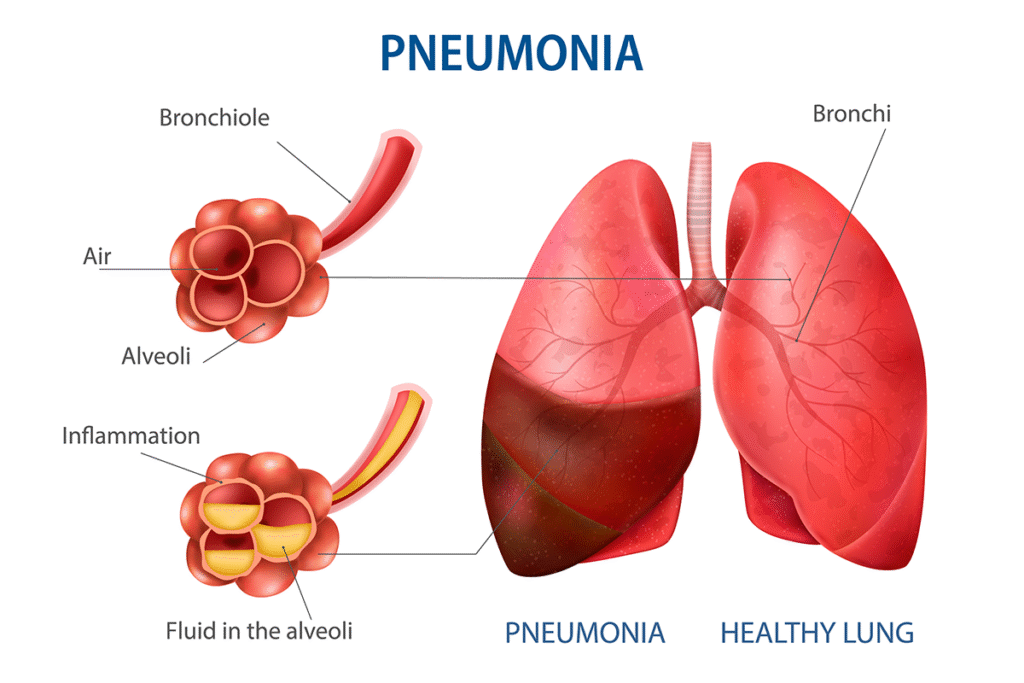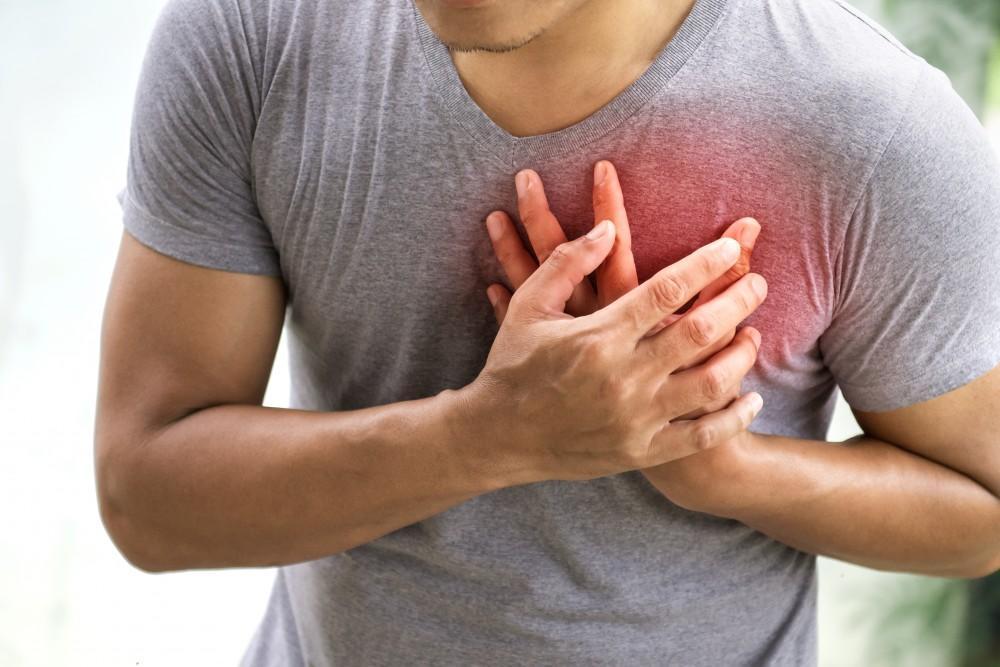Introduction
Pneumonia warning signs can often go unnoticed — but ignoring them may be dangerous. Pneumonia is a serious lung infection that affects the pulmonary parenchyma, causing inflammation and fluid buildup in the alveoli (air sacs of the lungs). Despite advancements in medicine, it remains a major cause of illness and death worldwide. It is often misdiagnosed, mistreated, or underestimated, especially in vulnerable populations.

This blog post explores everything you need to know about pneumonia — from its types and causes to diagnosis, treatment, and prevention. Whether you’re a medical student or someone concerned about respiratory infections, this comprehensive guide will be valuable.
What is Pneumonia?
Pneumonia is an acute infection that causes inflammation of the lungs, especially in the alveoli. The alveoli fill with pus or fluid, making breathing painful and oxygen exchange difficult. It can affect one or both lungs and varies in severity depending on age, immunity, and underlying conditions.
Types of Pneumonia
1. Community-Acquired Pneumonia (CAP)
This is the most common form and occurs outside of hospitals. Pathogens include Streptococcus pneumoniae, Haemophilus influenzae, and respiratory viruses. CAP can range from mild to life-threatening.
2. Hospital-Acquired Pneumonia (HAP)
Develops 48 hours or more after hospital admission. These infections are often caused by antibiotic-resistant organisms like MRSA and gram-negative bacteria.
3. Ventilator-Associated Pneumonia (VAP)
A subtype of HAP, VAP occurs in patients on mechanical ventilation. Common pathogens include P. aeruginosa, Acinetobacter spp., and resistant Enterobacteriaceae.
4. Health Care–Associated Pneumonia (HCAP)
Previously used to classify infections in patients with healthcare exposure. However, its usage is now limited due to overclassification and treatment challenges.
Causes and Risk Factors
Pneumonia is caused by a variety of bacteria, viruses, and fungi. The specific pathogen often depends on the setting and patient profile.
Common Pathogens
| Type | Organisms |
|---|---|
| Bacterial | S. pneumoniae, H. influenzae, S. aureus |
| Viral | Influenza virus, RSV, SARS-CoV-2 |
| Fungal | Pneumocystis jirovecii, Histoplasma capsulatum (rare) |
Risk Factors
- Age <5 or >65
- Smoking
- COPD, asthma
- Immunosuppression
- ICU admission
- Alcoholism
- Poor nutritional status
Pathophysiology of Pneumonia
Pneumonia results from microbial invasion of the lower respiratory tract. When the host defense mechanisms fail, pathogens invade the alveoli, leading to:
- Inflammatory response
- Capillary leakage and fluid accumulation
- Reduced oxygen exchange
- Possible sepsis or respiratory failure in severe cases
Pneumonia Warning Signs and Symptoms You Shouldn’t Ignore
Common signs and symptoms include:
- Fever, chills
- Cough (productive or dry)
- Chest pain while breathing
- Shortness of breath
- Fatigue, muscle aches
- Confusion (especially in elderly)
- Gastrointestinal symptoms in some patients
How to Recognize Pneumonia Warning Signs Early:
Recognizing pneumonia warning signs early is essential for timely treatment and preventing complications. If you or a loved one suddenly develops high fever, a sharp cough, or difficulty breathing — especially after a recent cold or flu — these could be early indicators of pneumonia. Early medical evaluation, including a physical exam and possibly a chest X-ray, can confirm the diagnosis and lead to quicker recovery.
Diagnosis
Diagnosis includes:
- Clinical Evaluation: History and physical exam
- Chest X-ray: Shows infiltrates or consolidation
- Blood and Sputum Cultures: Identify causative organisms
- Pulse Oximetry or ABG: Measures oxygen saturation
- Urine Antigen Tests: For Legionella and S. pneumoniae
- PCR Tests: For rapid pathogen identification
Treatment of Pneumonia
Empirical Therapy
Initial treatment is based on likely pathogens and patient risk factors.
Community-Acquired Pneumonia (CAP)
- Outpatients (no comorbidities): Azithromycin or doxycycline
- Comorbid patients: Beta-lactam + macrolide or fluoroquinolone
- Inpatients (non-ICU): IV ceftriaxone + azithromycin or levofloxacin
- ICU patients: Beta-lactam + azithromycin or respiratory fluoroquinolone
Hospital- and Ventilator-Acquired Pneumonia
- Requires broad-spectrum antibiotics covering MRSA and P. aeruginosa
- Common regimens: Piperacillin-tazobactam, cefepime, meropenem, plus linezolid or vancomycin for MRSA
Duration of Therapy
5–7 days for most patients, longer for VAP or MDR infections.
❌ Antibiotic Resistance in Pneumonia
Antimicrobial resistance complicates treatment, especially in VAP. Overuse of antibiotics and inadequate infection control allow MDR pathogens to thrive.
Key resistant pathogens:
- MRSA
- P. aeruginosa
- Carbapenem-resistant Enterobacteriaceae
- Enterobacteriaceae
🩺 Prognosis and Complications
Prognosis
- Depends on age, comorbidities, and early treatment
- Mortality:
- Healthy young adults: <5%
- Elderly or ICU patients: 20–40%
Complications
- Sepsis
- Respiratory failure
- Lung abscess
- Pleural effusion
- Heart inflammation (myocarditis/endocarditis)
What to Do If You Notice Pneumonia Warning Signs
If you notice pneumonia warning signs, don’t delay seeking medical help. Start by monitoring your temperature, breathing rate, and any worsening cough. Consult a healthcare provider for a proper diagnosis. Ignoring early symptoms can lead to severe complications like sepsis or respiratory failure. For at-risk individuals — such as the elderly or immunocompromised — even mild signs should be taken seriously.
✅ Prevention of Pneumonia
1. Vaccination
- Pneumococcal Vaccine: PCV13, PPSV23
- Influenza Vaccine: Yearly
- COVID-19 Vaccine: Prevents viral pneumonia
2. Lifestyle Measures
- Quit smoking
- Hand hygiene
- Masking during flu/COVID season
3. Hospital Protocols
- Elevate head of bed (VAP)
- Daily sedation breaks
- Early weaning from ventilation
- Regular oral hygiene in ICU
- ICU
📅 Follow-Up
Patients should be monitored closely post-discharge. Follow-up imaging (like X-rays) may be required in:
- Elderly patients
- Smokers
- Those with persistent symptoms
📝 Summary
Pneumonia is a life-threatening infection with varying causes, manifestations, and treatments. Early diagnosis, appropriate antibiotics, and prevention strategies such as vaccination play a key role in reducing mortality and hospital burden. As antibiotic resistance increases, individualized care and responsible prescribing are more important than ever.


Pingback: Dizziness and vertigo: Causes, Symptoms & When to Seek Help
Pingback: Cough: Causes, Types, Treatment, and Natural Remedies